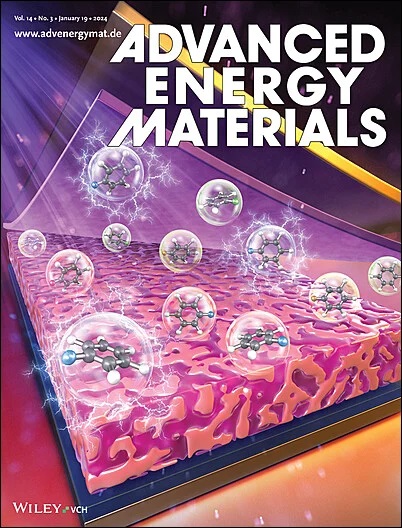Decoupled Ion Transport via Triadic Molecular Synergy in Flame-Retardant Quasi-Solid Electrolytes for Safe Lithium Metal Batteries
IF 24.4
1区 材料科学
Q1 CHEMISTRY, PHYSICAL
引用次数: 0
Abstract
Ionic liquids (IL)-based quasi-solid polymer electrolytes (QSPEs) hold promise for safe lithium metal batteries owing to their tunable electrochemical properties and processability. However, traditional design strategy has ignored the interdependencies among “component-function-interface”, leading to compromised practical applications hindered by sluggish lithium-ion transport kinetics and safety concerns. Herein, a triadic molecular synergy paradigm is proposed to decouple lithium-ion conduction mechanisms in flame-retardant QSPEs. Pentaerythritol tetraacrylate-lithium bis(trifluoromethanesulfonyl)imide (LiTFSI) provides the structural framework, while the IL (1-butyl-3-methylimidazole bis (trifluoromethylsulfonyl) imide, BmimTFSI) as a plasticizer softens the polymer chains by weakening the intermolecular forces to provide an additional ion-transport pathway while imparting flame-retardant properties. Additionally, the highly electronegative fluorine atoms of the additive (2-(perfluorohexyl)ethyl methacrylate, PFMA) promote LiTFSI dissociation through electron cloud migration, simultaneously immobilizing TFSI⁻ anions and suppressing cationic competition through strong PFMA−Bmim+ coordination. As a proof-of-concept, this synergistic design achieves a high lithium-ion transference number (0.72), forms a stable lithium fluoride-dominated interphases, and enhances battery safety via a condensed-phase flame-retardant mechanism. Experimental validation demonstrates that the designed quasi-solid electrolyte significantly enhances cycling stability in Li symmetric cells, Li||LiFePO4 and Li||LiNi0.8Co0.1Mn0.1O2 cells. The proposed molecular engineering strategy establishes a paradigm for developing high-performance QSPEs in lithium metal batteries.

求助全文
约1分钟内获得全文
求助全文
来源期刊

Advanced Energy Materials
CHEMISTRY, PHYSICAL-ENERGY & FUELS
CiteScore
41.90
自引率
4.00%
发文量
889
审稿时长
1.4 months
期刊介绍:
Established in 2011, Advanced Energy Materials is an international, interdisciplinary, English-language journal that focuses on materials used in energy harvesting, conversion, and storage. It is regarded as a top-quality journal alongside Advanced Materials, Advanced Functional Materials, and Small.
With a 2022 Impact Factor of 27.8, Advanced Energy Materials is considered a prime source for the best energy-related research. The journal covers a wide range of topics in energy-related research, including organic and inorganic photovoltaics, batteries and supercapacitors, fuel cells, hydrogen generation and storage, thermoelectrics, water splitting and photocatalysis, solar fuels and thermosolar power, magnetocalorics, and piezoelectronics.
The readership of Advanced Energy Materials includes materials scientists, chemists, physicists, and engineers in both academia and industry. The journal is indexed in various databases and collections, such as Advanced Technologies & Aerospace Database, FIZ Karlsruhe, INSPEC (IET), Science Citation Index Expanded, Technology Collection, and Web of Science, among others.
 求助内容:
求助内容: 应助结果提醒方式:
应助结果提醒方式:


